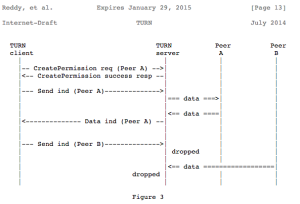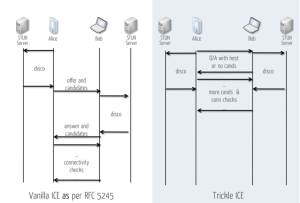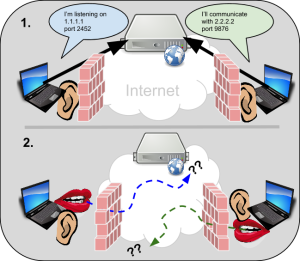WebRTC establishes peer-to-peer connections between web browsers. To do that, it uses a set of techniques known as Interactive Connectivity Establishment or ICE. ICE allows clients behind certain types of routers that perform Network Address Translation, or NAT, to establish direct connections. (See the WebRTC glossary entry for a good introduction.) One of the first problems is […]
NAT
coTURN: the open-source multi-tenant TURN/STUN server you were looking for
Last year we interviewed Oleg Moskalenko and presented the rfc5766-turn-server project, which is a free open source and extremely popular implementation of TURN and STURN server. A few months later we even discovered Amazon is using this project to power its Mayday service. Since then, a number of features beyond the original RFC 5766 have been […]
ICE always tastes better when it trickles! (Emil Ivov)
For the last year and a half I’ve been working with a number of customers helping them to understand what WebRTC is about, supporting them in the definition of new products, services, and in some cases even developing WebRTC prototypes/labs for them. I’ve spent time with Service Providers, Enterprise and OTT customers and the very […]
The Open Source rfc5766-turn-server Project – Interview with Oleg Moskalenko
As Reid previously introduced in his An Intro to WebRTC’s NAT/Firewall Problem post, NAT traversal is often one the more mysterious areas of WebRTC for those without a VoIP background. When two endpoints/applications behind NAT wish to exchange media or data with each other, they use “hole punching” techniques in order to discover a direct communication […]
An Intro to WebRTC’s NAT/Firewall Problem
Most folks that set out to write an application, or build an architecture, begin with nothing but features and functionality in mind. Many might start out assuming they will be traversing flat, reliable, and secure networks. Inevitably, reality sets in as one starts to demo or prototype much beyond the friendly confines of the lab, […]





